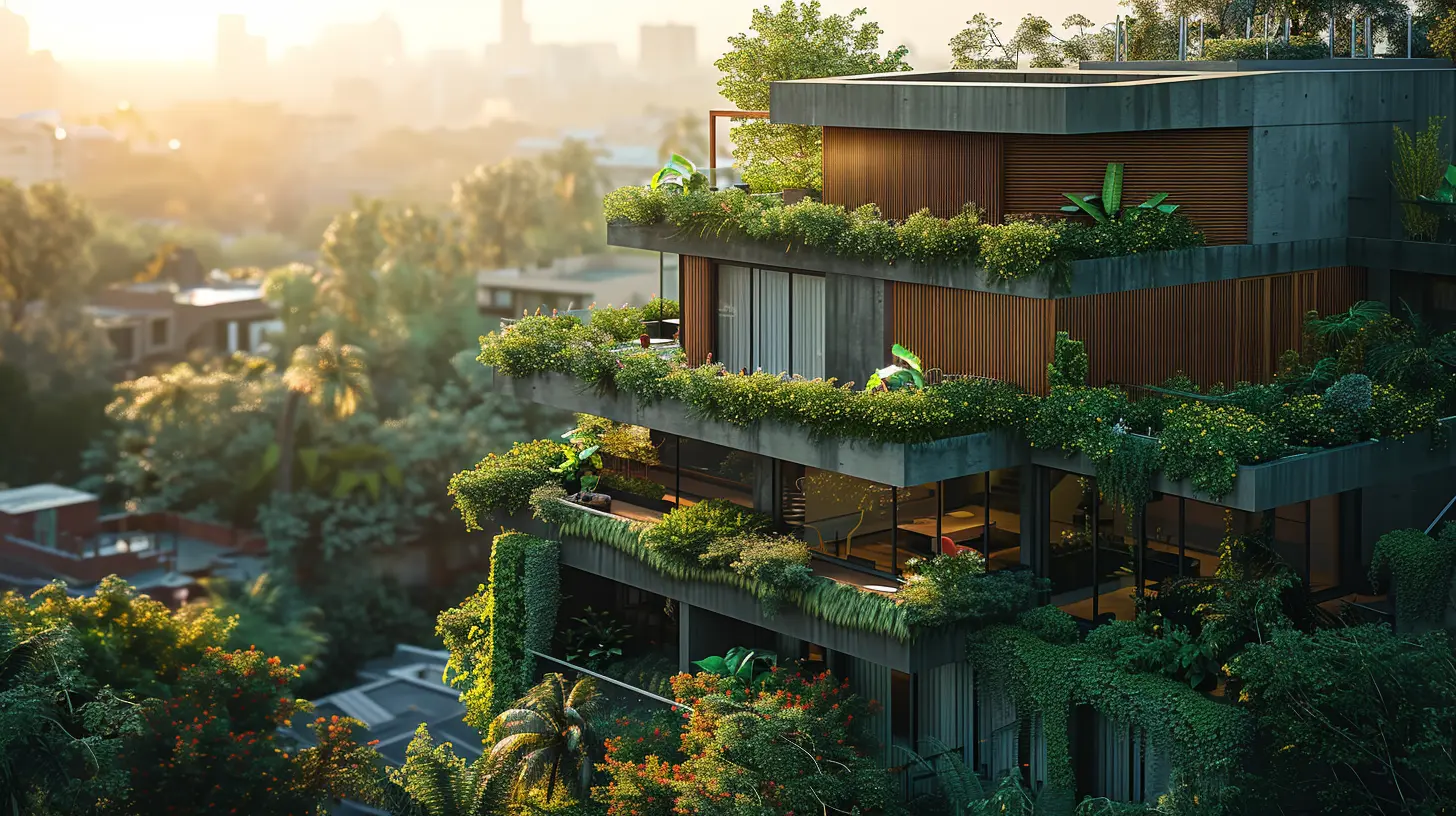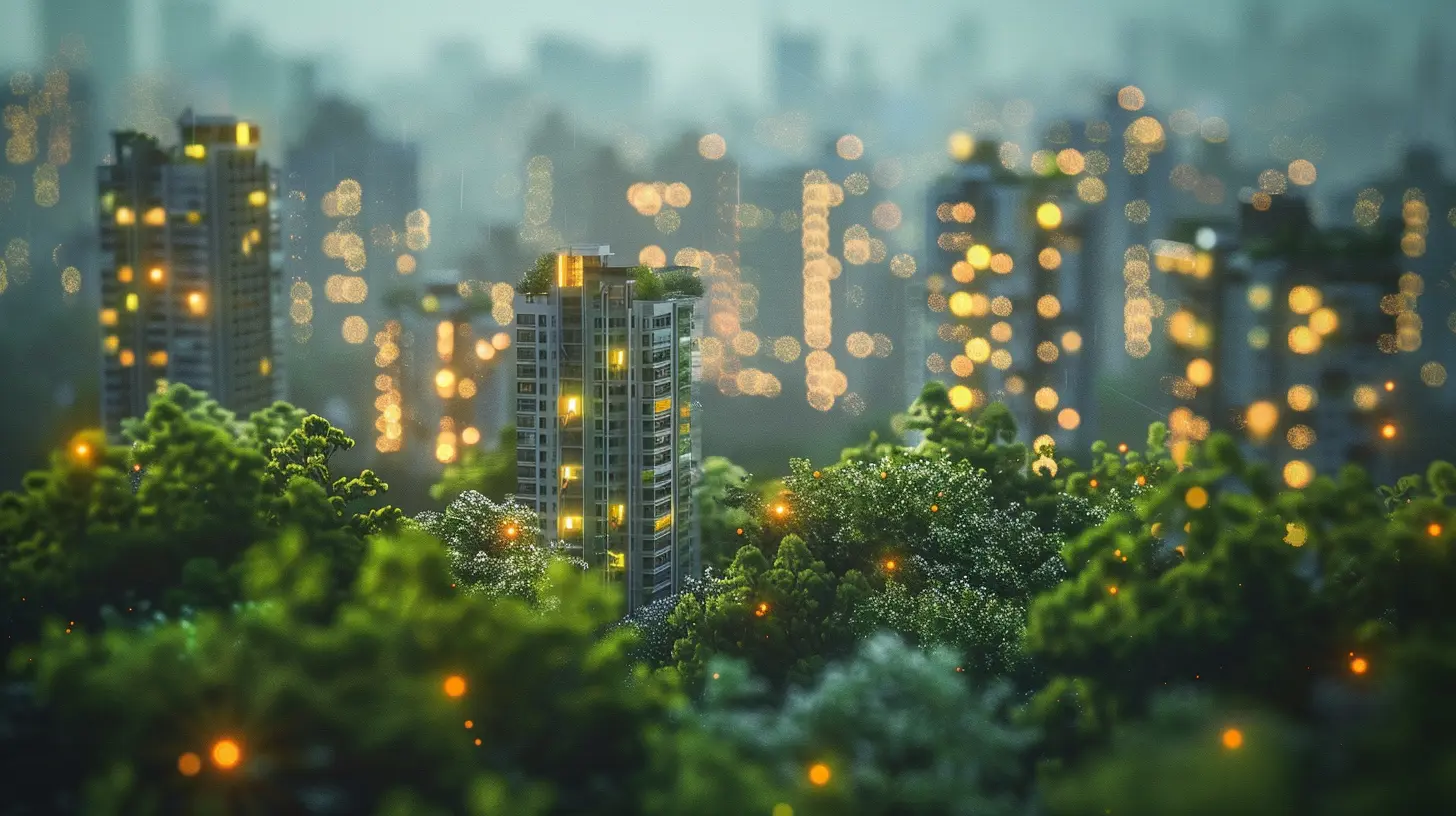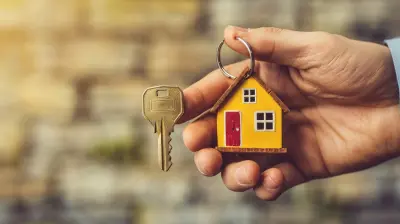Sustainable Building Practices in Urban Developments
22 September 2025
Sustainable building practices have become a game-changer in urban developments. With cities growing at an unprecedented rate, the real estate industry faces increasing pressure to construct buildings that are not only functional and beautiful but also environmentally friendly. But what exactly are these sustainable practices, and why should we care?
Whether you're a developer, investor, or simply an urban dweller, understanding sustainable building techniques can help shape the future of our cities. Let’s dive into the key elements of sustainable urban development and how they contribute to a greener planet.

What Are Sustainable Building Practices?
Sustainable building practices focus on reducing the environmental impact of construction while maintaining efficiency, durability, and aesthetic appeal. It’s about designing buildings that are energy-efficient, use sustainable materials, and minimize waste during construction. Think of it as building smarter, not just bigger.Why Should Urban Areas Prioritize Sustainability?
Urban areas are responsible for a significant portion of global carbon emissions. With millions of people crowding into cities, energy consumption skyrockets, air pollution worsens, and natural resources deplete faster than they can regenerate. Sustainable building practices tackle these issues head-on by reducing energy consumption, cutting down greenhouse gas emissions, and creating healthier spaces for people to live and work.
Key Elements of Sustainable Urban Building
1. Energy-Efficient Designs
Energy-efficient buildings are at the core of sustainable development. By incorporating passive design strategies like proper insulation, natural ventilation, and strategically placed windows, buildings can reduce dependency on artificial heating and cooling systems.Additionally, integrating smart lighting systems, energy-efficient appliances, and renewable energy sources such as solar panels can further drive down energy consumption. Imagine paying lower utility bills while also helping the environment—sounds like a win-win, right?
2. Sustainable Building Materials
Traditional construction materials often contribute to deforestation, pollution, and excessive waste. Sustainable alternatives like recycled steel, bamboo, reclaimed wood, and low-carbon concrete offer eco-friendly solutions without compromising on quality.For example, bamboo grows significantly faster than traditional timber and has incredible strength, making it an excellent choice for sustainable construction. Using locally sourced materials also reduces the carbon footprint associated with transportation.
3. Water Conservation Techniques
Water scarcity is a growing concern, especially in densely populated urban centers. Sustainable buildings implement water-saving strategies such as:- Rainwater harvesting systems – Collect and store rainwater for irrigation and toilet flushing.
- Low-flow fixtures – Reduce water wastage in sinks, showers, and toilets.
- Greywater recycling – Reuse wastewater from sinks and showers for non-potable purposes.
By adopting these techniques, urban developments can significantly cut down on water consumption and promote responsible water usage.
4. Green Roofs and Vertical Gardens
Green roofs are more than just a visual treat—they improve energy efficiency, reduce heat absorption, and enhance air quality. These living roofs act as natural insulators, keeping buildings cooler in summer and warmer in winter.Similarly, vertical gardens (or "living walls") add greenery to urban environments, helping absorb carbon dioxide, reduce noise pollution, and improve overall air quality. Plus, who wouldn’t want a lush wall of greenery instead of a boring concrete facade?
5. Smart Technology and Automation
Technology plays a huge role in making buildings more sustainable. With the rise of IoT (Internet of Things), modern buildings can be fitted with smart systems that optimize energy use, improve indoor air quality, and automate lighting and climate control.Imagine walking into a room where the lights and air conditioning automatically adjust based on occupancy—no energy wasted, no unnecessary costs. That’s the power of smart automation in sustainable urban development.

Benefits of Sustainable Building Practices in Urban Areas
1. Lower Carbon Footprint
By reducing energy consumption and using eco-friendly materials, sustainable buildings help cut down greenhouse gas emissions, making cities cleaner and healthier.2. Cost Savings in the Long Run
While the initial investment in sustainable practices may seem high, the long-term savings in energy, water, and maintenance costs make it a financially smart choice.3. Improved Air Quality and Health
Sustainable buildings use non-toxic materials and proper ventilation systems, creating healthier indoor environments that reduce respiratory issues and allergies.4. Enhanced Property Value
Green-certified buildings often see higher demand in the real estate market. Buyers and tenants are willing to pay a premium for energy-efficient homes and offices due to lower utility bills and better living conditions.5. Increased Resilience to Climate Change
With rising temperatures and extreme weather events becoming more common, sustainable buildings are designed to be more resilient, ensuring long-term usability and safety.
Challenges in Adopting Sustainable Building Practices
While sustainability in urban development sounds great, there are some hurdles:- Higher Initial Costs – Many developers hesitate due to the upfront investment required for sustainable materials and technologies.
- Lack of Awareness – Some stakeholders still don’t fully understand the long-term benefits of eco-friendly construction.
- Regulatory Barriers – Building codes and regulations may not always support sustainable innovations, slowing down progress.
However, with growing demand and government incentives, these challenges are gradually being addressed. Developers and investors who embrace sustainability today will likely reap the benefits in the years to come.
The Future of Sustainable Urban Development
The future of real estate lies in sustainability. Cities worldwide are adopting green building codes, governments are offering incentives for eco-friendly constructions, and buyers are prioritizing energy-efficient homes.Innovations like net-zero buildings (structures that produce as much energy as they consume) and 3D-printed sustainable homes are already making waves in the industry. As technology advances, we can expect even more exciting developments in sustainable architecture.
Final Thoughts
Sustainable building practices in urban developments are not just a passing trend—they are a necessity. With climate change concerns on the rise and urban populations growing rapidly, we must rethink how we build our cities.By embracing energy-efficient designs, sustainable materials, water conservation, green spaces, and smart technology, we can create urban environments that are not only livable but also beneficial for future generations. So, whether you're planning a new construction project or looking to invest in real estate, sustainability should be at the forefront of your decision-making.
all images in this post were generated using AI tools
Category:
Urban LivingAuthor:

Camila King
Discussion
rate this article
1 comments
Orion Brown
Great insights on sustainable building practices! It's inspiring to see how urban developments can contribute to environmental health while enhancing community well-being. Thank you for sharing!
October 8, 2025 at 11:16 AM

Camila King
Thank you for your kind words! I'm glad you found the insights valuable and inspiring. Together, we can pave the way for healthier, more sustainable communities!


